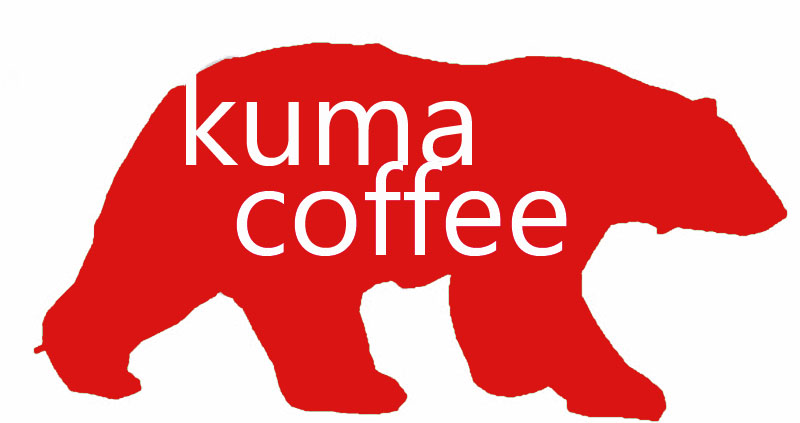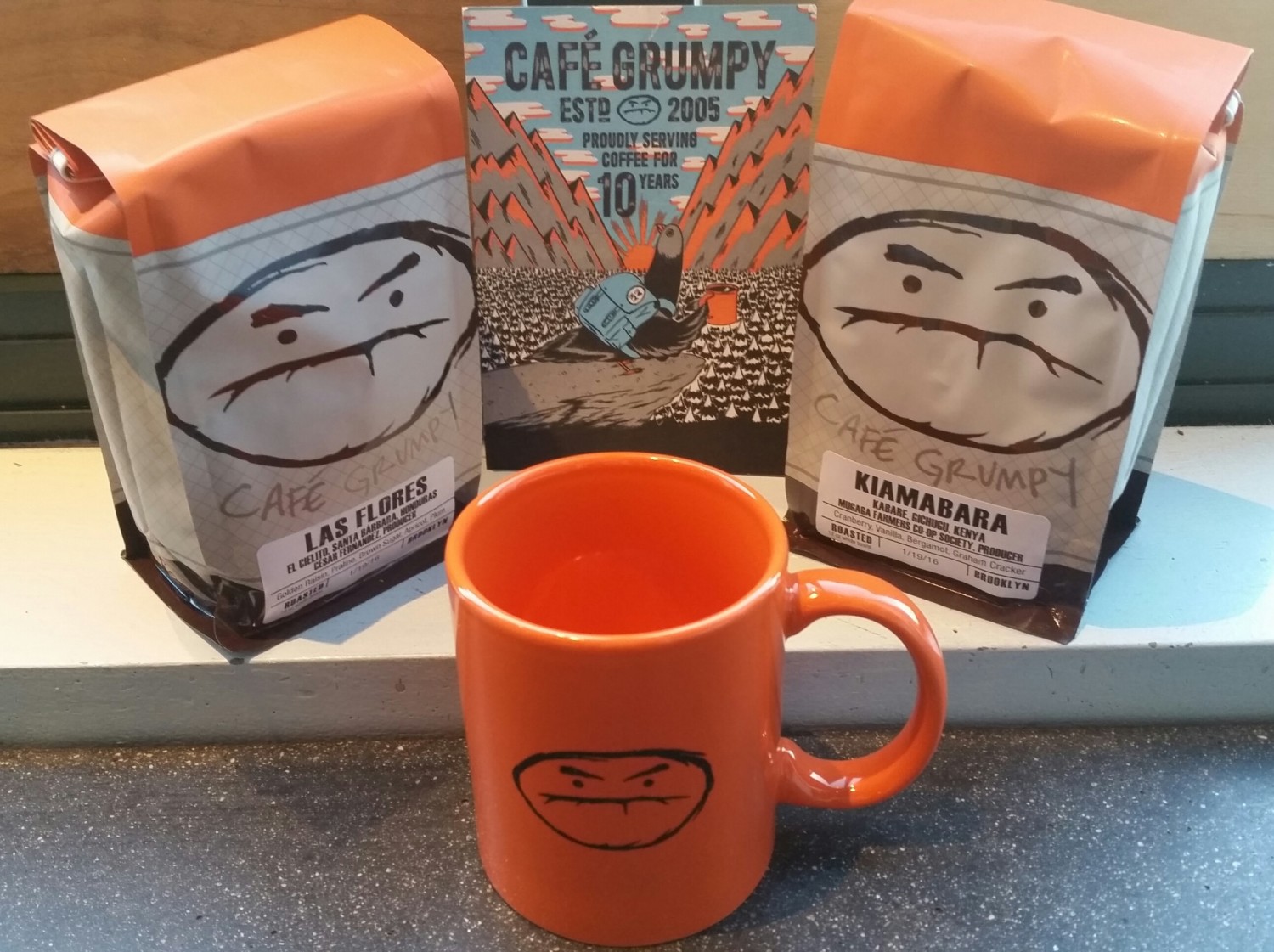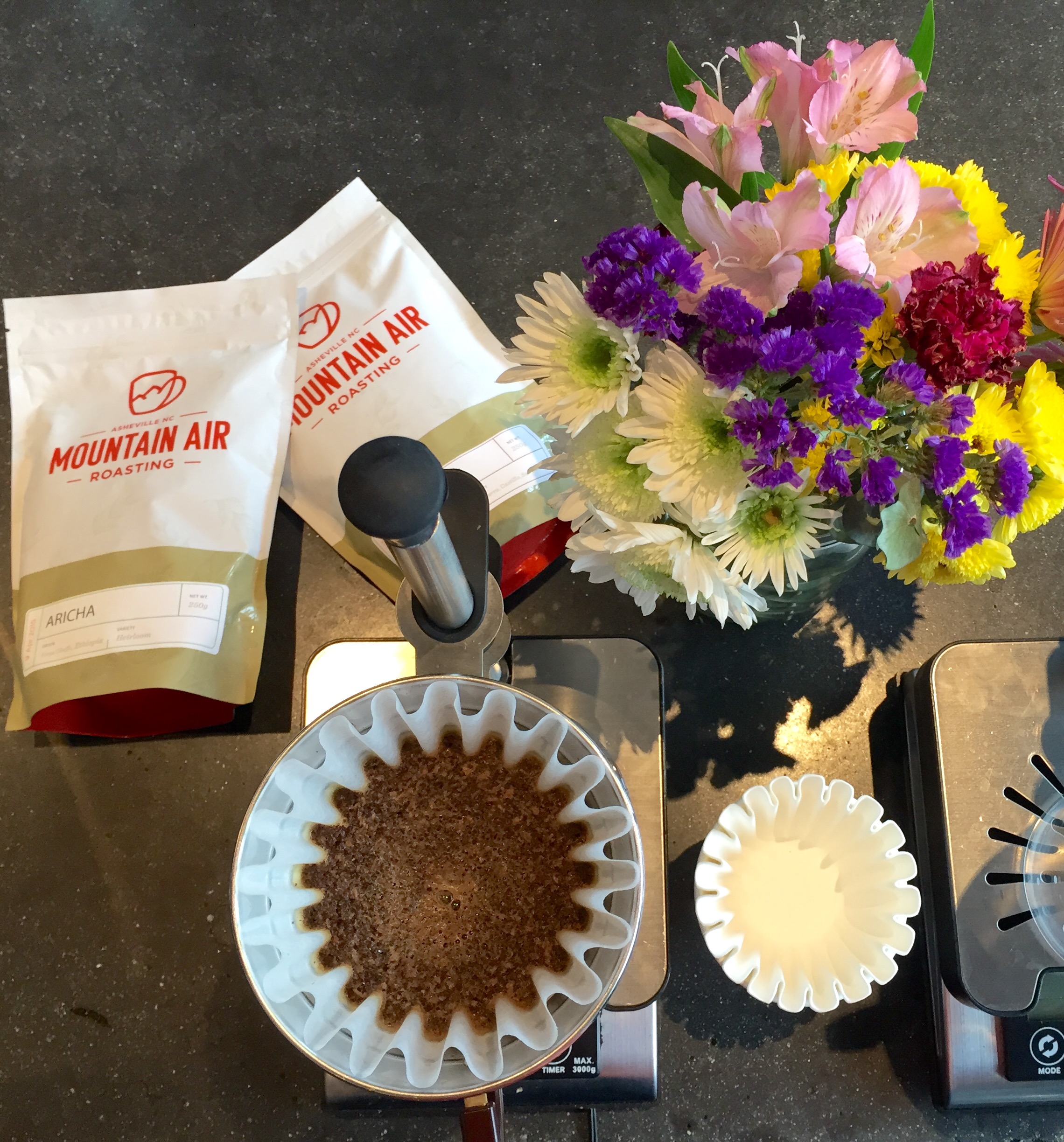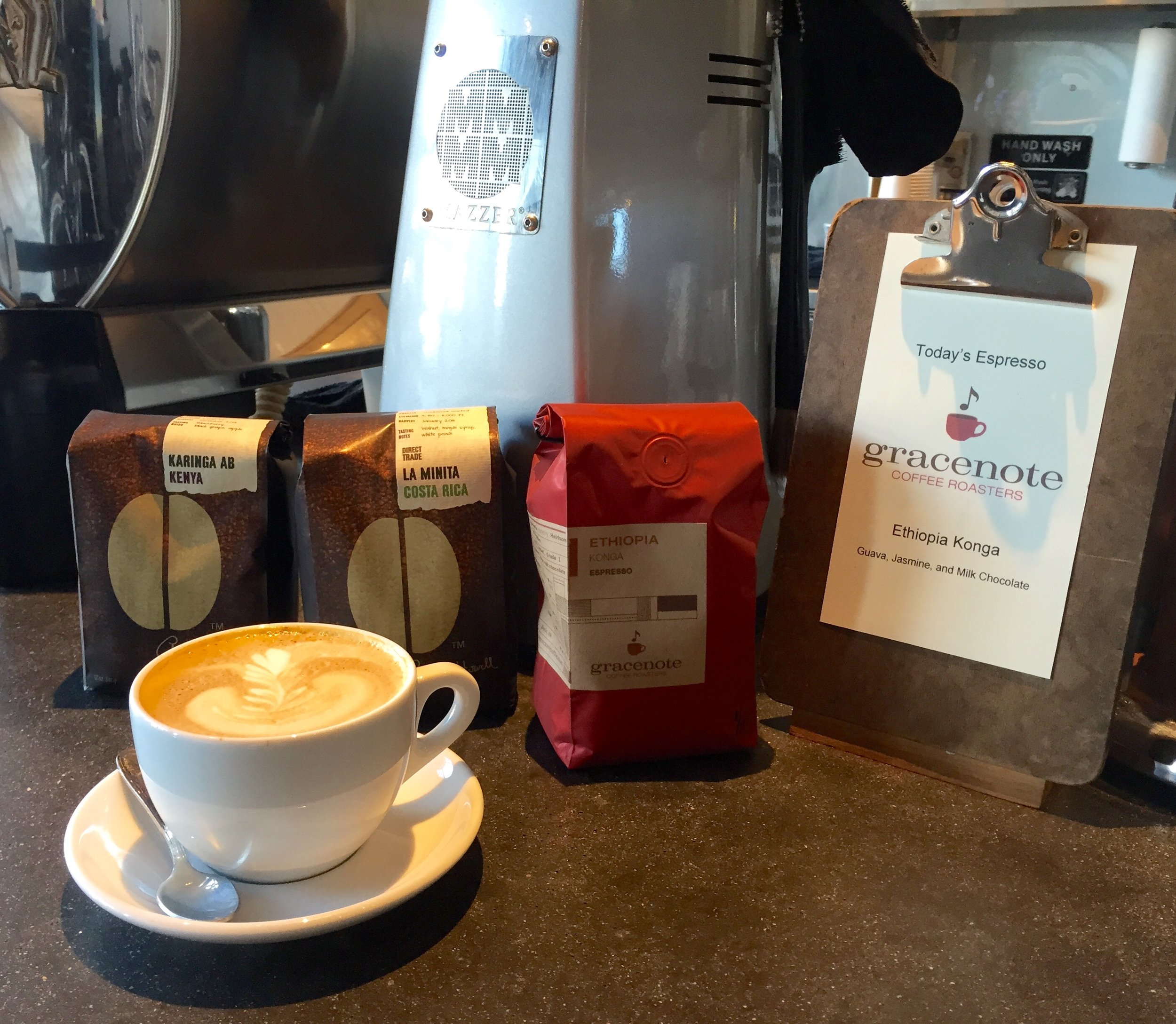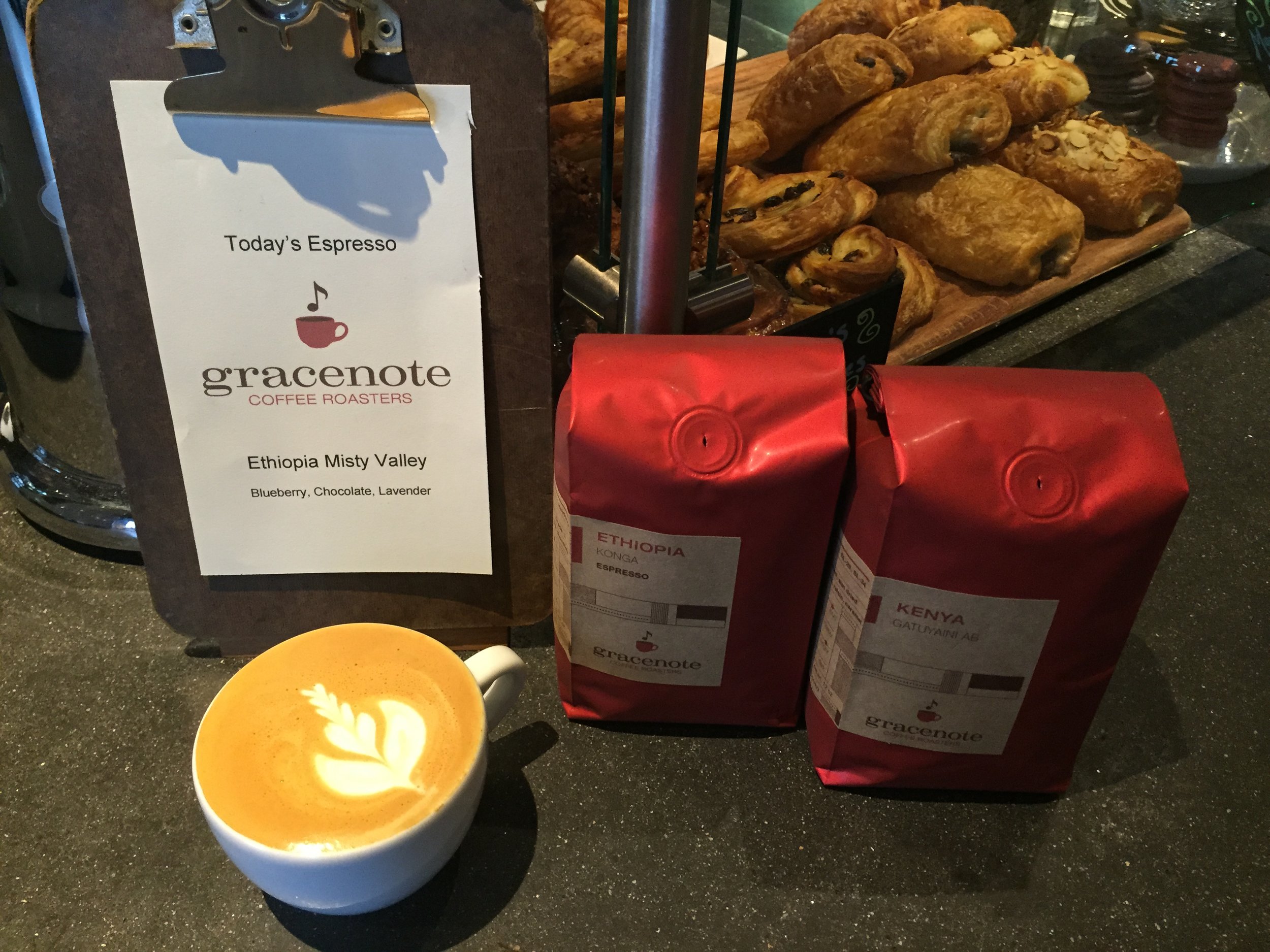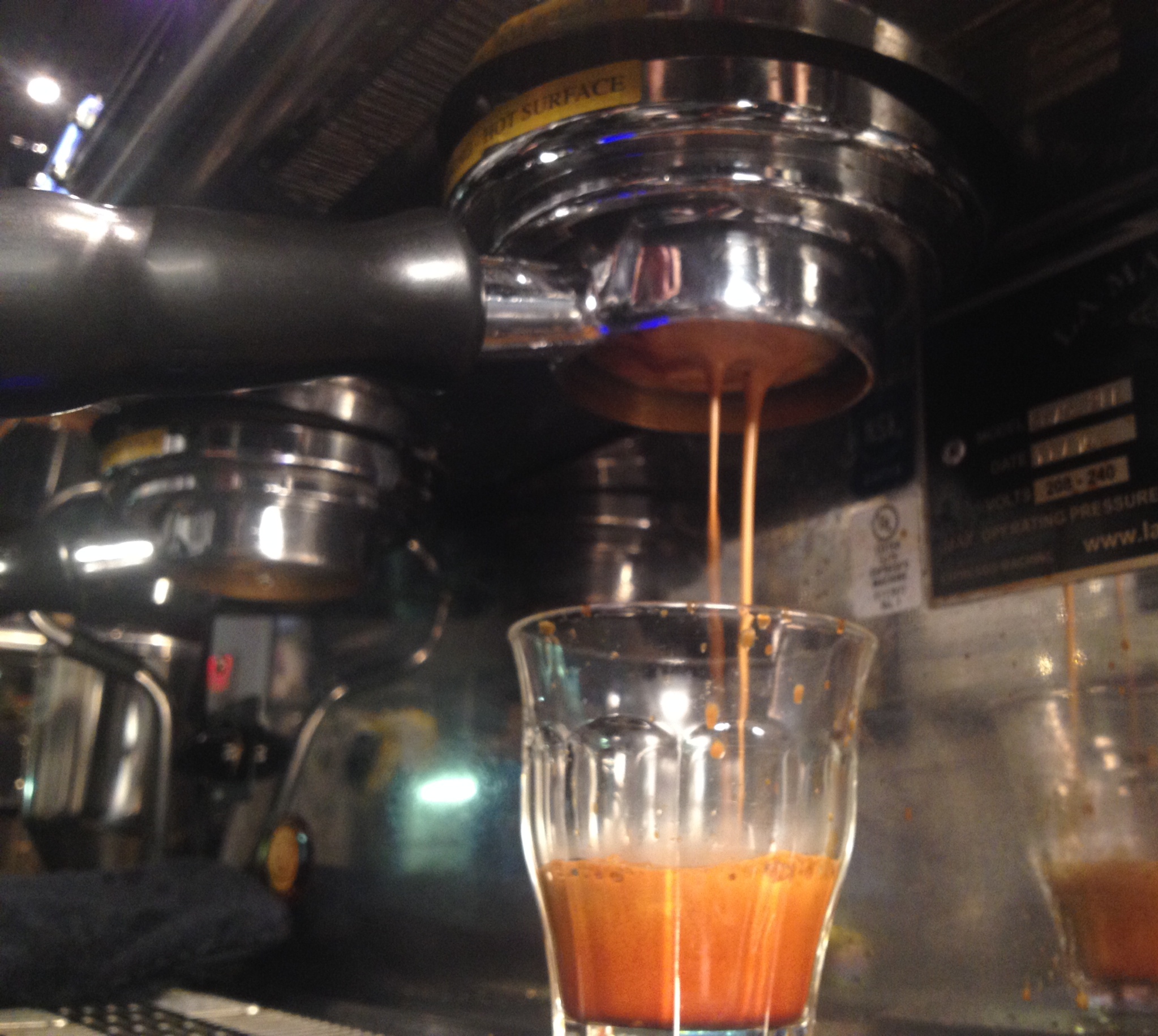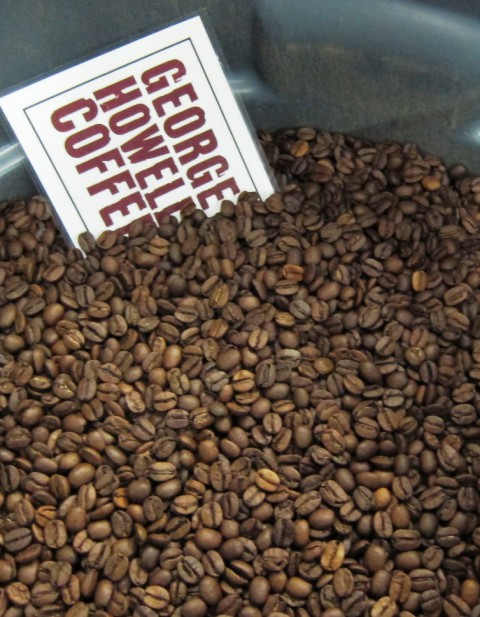This Week in Coffee: Give the Gift of Coffee!
 Currently in the cafe we are serving smooth drip coffee pourover options from Tandem Coffee Roasters and a delicious and sweet El Salvador Espresso from George Howell Coffee. Tandem's Guatemalan Chalabal offers juicy flavors of cherry and lemon, while the light Ayele of Ethiopia presents with floral flavors combined with notes of raspberries, cola and lemon. George Howell's Montecarlos espresso suits the holiday season with notes of blood orange, light brown sugar, and almond.
Currently in the cafe we are serving smooth drip coffee pourover options from Tandem Coffee Roasters and a delicious and sweet El Salvador Espresso from George Howell Coffee. Tandem's Guatemalan Chalabal offers juicy flavors of cherry and lemon, while the light Ayele of Ethiopia presents with floral flavors combined with notes of raspberries, cola and lemon. George Howell's Montecarlos espresso suits the holiday season with notes of blood orange, light brown sugar, and almond.
Looking for Last Minute Gifts and Goodies from the Upcoming Holidays?
Our retail shelves are fully stocked with a wide variety of whole bean coffees from both George Howell Coffee and Tandem Coffee Roasters. Come grab a bag to have on hand for holiday guests and mornings spent staying in from the cold.
In need of equipment for quality home brewing? Looking for a great gift to give to a fellow coffee lover? We can help you with that as well! Our baristas will be happy to help you select the equipment that best suits your needs.

Options currently in stock include...
A. Virtuoso Coffee Grinder: This conical burr grinder does a wonderful job of offering a consistent and clean grind at a wide variety of grind settings. Use this grinder to grind fine enough for espresso or coarse enough for a French press. Small adjustments will allow you to play around a bit till you find your perfect cup of coffee.
B. Bonavita Electric Kettle: This kettle is a great option for any pourover brewing method. The goose-neck spout on this electric kettle allows for precise pour control. Heating temperature can be adjusted by 1 degree Fahrenheit to suit your preferred coffee brewing or tea steeping temperature and can hold the temperature for up to an hour.
C. Aeropress Brew System: The easily portable Aeropress system is perfect for brewing at home, stowing at the office, or traveling. Though similar to a french press, the Aeropress uses a filter to offer a clean smooth cup that is easy to brew and easy to clean up. Curious how it works? Ask one of our baristas and order an aeropress brew in the Cafe to try it out.
D. Chemex Filter-Drip Coffeemaker: One of our cafe brewing options, the Chemex is definitely a favorite brew system. The slow drip through thick paper filters used for this pourover makes for a wonderfully smooth cup with well developed flavors.
E. Porlex Hand Grinder: This conical burr hand grinder is a wonderful small grinder option. It has a wide range of grind settings from espresso fineness to French press coarseness and has a 30 gram capacity.
F, G, H. V60 Glass Dripper, Filters, and Server: The V60 is another great pourover brewing option that allows the user to control the flow, timing, and temperature of water for customized brewing.
I, J. Kalita Wave and Filters: The Kalita Wave is the pourover brewer we are currently using in the Cafe, and we love it! With a flat bottom and three drip holes, the Kalita offers a delicious and evenly extracted brew.
K. Hario Drip Kettle: This is the kettle we use in the Cafe for all of our pourovers. Another goone-neck spout kettle, the Hario kettle allows for a very controlled pour.
If you are not sure which equipment would be preferred by your friends and family, we also offer Gift Cards that can be used in both the cafe and bike shop.
Seasons Greetings and Happy Holidays!



